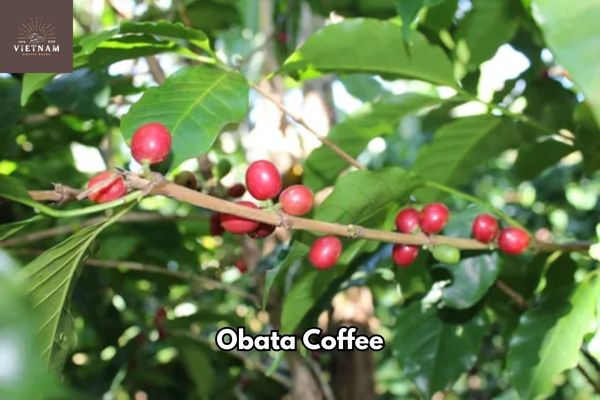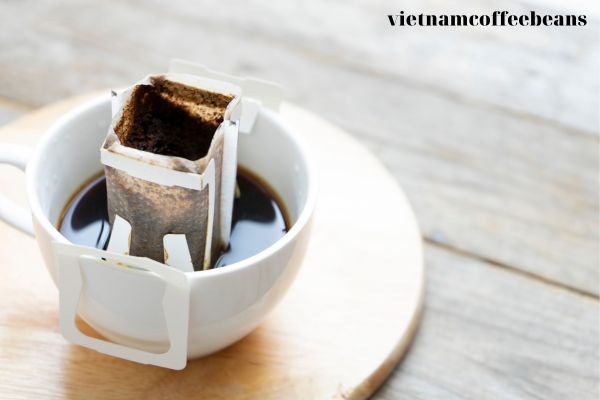Moka Pot Coffee Ratio is an important factor to consider when making coffee using a Moka Pot. So you’ve heard about the Moka pot, a classic Italian coffee making device that promises rich, flavorful coffee in just a few minutes. But do you know the secret to achieving that perfect cup of this coffee? It all comes down to the coffee-to-water ratio.
In my quest for the ultimate Moka pot experience, I delved into the art and science behind finding the ideal balance of coffee grounds and water. Through experimentation and research, I discovered that this ratio plays a crucial role in determining the taste and strength of your drink.
Join me as we explore the ins and outs of Moka pot making and uncover the secrets to achieving that perfect cup every time. From understanding the basics of the making process to adjusting grind size for optimal extraction, I’ll guide you through each step with expert knowledge and detailed instructions.
Get ready to elevate your coffee game as we dive deep into the world of Moka pot making and unlock its full potential.
Key Takeaways
- Understanding the basics of Moka pot making is essential.
- Balance is key in finding the perfect coffee-to-water ratio.
- Adjusting grind size affects the extraction quality.
- Experimenting with different ratios allows for customization.
Understanding the Basics of Moka Pot Brewing Coffee

If you’re a coffee lover looking to elevate your making skills, understanding the basics of moka pot making is essential. The moka pot is a classic Italian coffee maker that produces a rich and strong drink, somewhat similar to espresso but with its own unique taste.
To achieve the perfect cup, it’s important to master the right techniques and be familiar with troubleshooting common issues.
To begin, start by grinding your coffee beans to a medium-fine consistency. This helps to ensure proper extraction and prevents over or under-extraction. Next, fill the bottom chamber of the moka pot with hot water up to the pressure release valve. Fill the filter basket with freshly ground coffee, making sure not to tamp it down too tightly.
When assembling the moka pot, make sure all parts are properly fitted together before placing it on low heat. It’s important to watch closely as the water in the bottom chamber heats up and creates pressure that forces hot water through the coffee grounds and into the top chamber.
Troubleshooting moka pot issues can be crucial in achieving great results. If your brew tastes burnt or bitter, try using slightly coarser grind size or reducing heat during making. If you notice weak or watery flavors, consider using finer grind size or increasing heat.
By mastering these making techniques and troubleshooting tips for your moka pot, you’ll be well on your way to enjoying delicious cups of homemade coffee that rival those from professional cafes. Happy brewing!
Finding the Perfect Coffee to Water Ratio
Finding the perfect coffee-to-water ratio (see coffee water ratio explained) is essential for making a delicious cup of coffee. The coffee to water ratio refers to the quantity of coffee used in relation to the amount of water when creating coffee.
A common starting point is to use 1 gram of coffee for every 16 grams of water, but this can vary depending on personal taste and the type of coffee being used. For drip coffee, using a coffee scale can help ensure that the right quantity of coffee is used.
If the coffee tastes too strong, using less coffee or more water can help balance the flavor. For those using a Bialetti Moka, the manufacturer recommends filling the filter basket with coffee and not tamping it down. Experimenting with different ratios and making methods can help you find the perfect balance for your taste.
When it comes to finding the perfect coffee-to-water ratio, balance is key. It’s important to strike the right balance between the quantity of coffee powders and water to achieve a delicious cup of coffee.
Experimenting with different ratios is essential in order to discover your personal preference and tailor your brew to suit your taste buds. By adjusting the ratio, you can control the strength and flavor of your coffee, allowing you to create a truly customized brewing experience.
You can try the Dalgona coffee, the perfect ratio for dalgona coffee for your taste.
The Importance of Balance
Although balance can be elusive, it’s the delicate dance between flavors that makes this coffee a symphony of taste. Finding the right intensity is key to achieving a consistent flavor profile in your drink.
By experimenting with different coffee-to-water ratios, you can fine-tune the strength of your coffee to suit your preferences. To grab your attention, here are three important factors to consider:
- The coffee grind: A finer grind will extract more flavor, while a coarser grind will yield a lighter cup.
- Water temperature: Maintaining a consistent temperature throughout the making process is crucial for extracting balanced flavors.
- Brew time: Adjusting the amount of time your coffee spends in contact with water allows you to control the strength and complexity of flavors.
By understanding and mastering these elements, you can create a harmonious cup of this coffee every time.
Experimenting with Different Ratios
Exploring various combinations of coffee and water quantities unveils a realm of possibilities to enhance the flavor profile of your moka pot brew. By experimenting with different ratios, you can tailor your coffee to suit your taste preferences.
The ratio refers to the amount of coffee powders to water used in the making process. It plays a crucial role in determining the strength and flavor intensity of your final cup.
To help you get started on this journey of discovery, here’s a table showcasing three different ratios commonly used in moka pot making:
| Coffee (grams) | Water (milliliters) | Ratio |
| 15 | 180 | 1:12 |
| 18 | 210 | 1:11.7 |
| 20 | 240 | 1:12 |
These ratios are just starting points; feel free to adjust them based on personal preference. Remember, different making methods and bean characteristics can also influence flavor profiles, so don’t be afraid to experiment further!
Adjusting the Grind Size for Optimal Extraction
To achieve the perfect extraction, have you considered adjusting the grind size in your coffee ratio? The grind size plays a crucial role in determining the extraction quality of your coffee.
Here are three key things to keep in mind when adjusting the grind size:
- Finer Grind: A finer grind will result in a slower extraction process, allowing for more flavor compounds to be extracted from the coffee grounds. However, be cautious not to go too fine as it can lead to over-extraction and a bitter taste.
- Coarser Grind: On the other hand, a coarser grind will yield a faster extraction with less flavor compounds being extracted. This can result in a weaker cup of coffee.
- Finding the Sweet Spot: Experimentation is key when adjusting the grind size. Start with a medium-fine grind and gradually adjust based on taste preferences until you find that sweet spot where you achieve balanced flavors and optimal extraction.
By understanding how different grind sizes affect your moka pot making process, you can take control of your coffee’s flavor profile and enhance your overall brewing experience.
Mastering the Brewing Process

Ready to become a moka pot brewing master? Let’s dive into the secrets of mastering the brewing process! Making coffee with a moka pot is an art that requires precision and technique. To achieve the perfect brew, it’s important to understand different brewing techniques.
Firstly, ensure that you preheat the water to avoid over-extraction or under-extraction. This will help maintain optimal temperature throughout the brewing process. Secondly, make sure to use freshly ground coffee beans for maximum flavor extraction.
Adjusting the grind size can affect the overall taste, so experiment until you find your preferred level of coarseness. Lastly, troubleshooting common issues is essential in becoming a pro brewer. If your coffee tastes bitter, try using a lower heat setting or reducing steeping time.
On the other hand, if it tastes weak or sour, increase heat or steeping time accordingly. With practice and patience, you’ll soon be able to brew exceptional moka pot coffee every time!
Tips and Tricks for a Delicious Moka Pot Coffee Ratio

When it comes to making delicious coffee, two key aspects that shouldn’t be overlooked are cleaning and maintenance, as well as enhancing the flavor with additions. Properly cleaning your Moka pot ensures that there are no residual flavors from previous brews, resulting in a clean and pure taste.
Additionally, maintaining your Moka pot by regularly replacing gaskets and filters will ensure optimal brewing conditions. Lastly, experimenting with additions such as cinnamon or vanilla extract can elevate the flavor profile of your coffee to new heights.
You may want to try Vietnamese coffee, how to brew vietnamese coffee?, we have an artilce for it on our website.
Cleaning and Maintenance
Make sure you give your moka pot a regular clean and upkeep to keep it brewing like a well-oiled machine. Cleaning techniques are crucial in preventing coffee buildup, which can affect the taste and quality of your brew.
Start by disassembling the moka pot and rinsing each component with warm water. Avoid using soap as it can leave residue that alters the flavor of your coffee. For stubborn stains or odor, you can use a mixture of vinegar and water to soak the parts before rinsing thoroughly.
Pay close attention to the filter basket and gasket, as these areas tend to accumulate leftover coffee grounds and oils. Use a brush or toothpick to remove any buildup in these tight spots. Once cleaned, let all components air dry completely before reassembling for future use.
By following these cleaning techniques regularly, you’ll ensure that your moka pot continues producing deliciously smooth much coffee every time.
Enhancing the Flavor with Additions
After ensuring that your moka pot is clean and well-maintained, let’s explore how to enhance the flavor of your coffee with additions. Adding certain ingredients can elevate the taste profile and create a more personalized brew.
When it comes to making techniques, consider experimenting with different ratios of coffee to water. Adjusting the amount of ground coffee you use can significantly impact the strength and flavor of your brew.
Additionally, try incorporating various flavor profiles by adding spices like cinnamon or cardamom directly into the coffee grounds before making. Another option is to infuse your coffee with flavored syrups or extracts for an added burst of taste. Don’t be afraid to get creative and explore different combinations – there are endless possibilities to discover!
- Try different coffee-to-water ratios
- Experiment with spices like cinnamon or cardamom
- Infuse brewed coffee with flavored syrups or extracts
Frequently Asked Questions
Conclusion
In conclusion, mastering the art of creating coffee with a Moka pot is a delightful journey that requires patience and experimentation.
By understanding the basics, finding the perfect coffee-to-water ratio, adjusting the grind size, and mastering the making process, you can achieve a rich and flavorful cup of Moka pot coffee. Remember to have fun along the way and don’t be afraid to try new techniques.
So grab your Moka pot, make up a delicious cuppa joe, and let it transport you to caffeine heaven!
There a coffee has name Cowboy, you may want to try it, learn about the history and science of cowboy coffee from our website, you will get more information.
Hope you get useful information from the article, If you want to read other article such as tips for making perfect iced coffee or want to read more about coffeebeans, please visit the website: vietnamcoffeebeans.com
Thank you!






